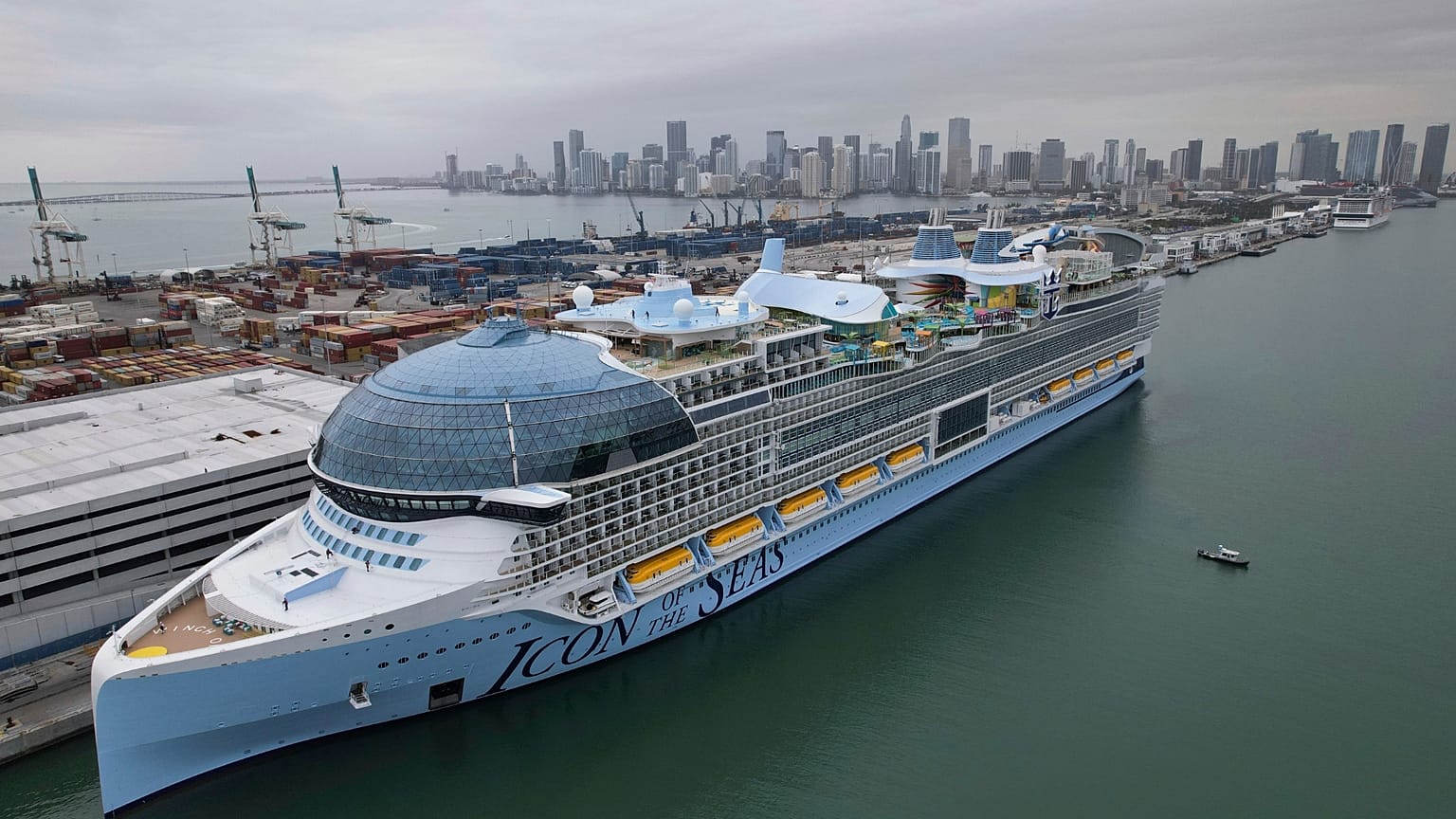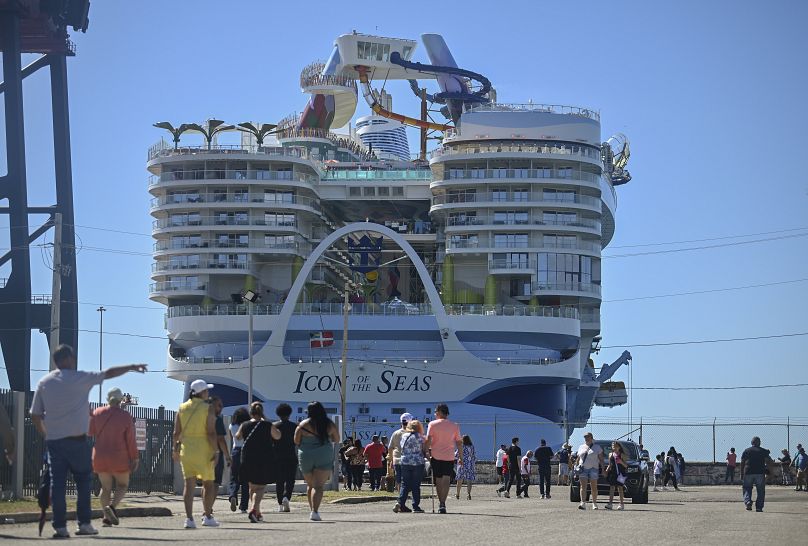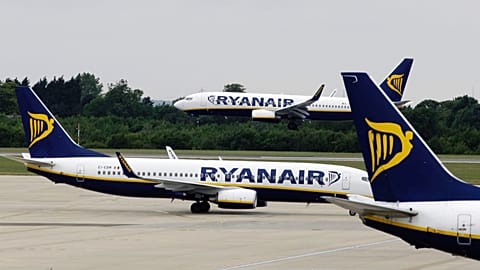Five times larger than the Titanic with room to spare, the Icon of the Seas can carry 7,600 passengers.
The world’s biggest cruise ship is about to embark on its first sailing. On 27 January, the Icon of the Seas will depart on its inaugural cruise
The Icon of the Seas is longer than the Eiffel Tower is tall with 20 decks. There are seven pools including the “largest pool at sea” as well as a waterpark with six waterslides. The ship has more than 40 bars and restaurants spread across eight “neighbourhoods”.
Five times larger than the Titanic, it has a maximum capacity of 7,600 passengers and more than 2,000 crew.
The ship’s first sailing has already sold out and trips through the rest of 2024 are fast filling up. It is one of 14 new cruise ships setting sail this year alone.
With features like liquefied natural gas (LNG) powered engines, heat from the engines used to warm water, and the ability to plug into electricity supplies at ports, Icon of the Seas will be Royal Caribbean’s “most sustainable ship to date”, according to the company.
And cruise ships are only getting bigger with the average liner growing by 10,000 gross tonnes every decade. Some are concerned about the environmental consequences of such increasingly massive vessels.
So do bigger cruise ships really mean a bigger impact on the climate?
How do cruises impact the environment?
The launch of Icon of the Seas comes as many European countries crack down on cruise ships with new regulations aimed at targeting pollution in ports.
Tough new rules in Norway will mean that only ships powered by alternative fuels can dock in the country’s harbours from 2026. The government is trying to cut down on pollution in its scenic fjords caused by the marine diesel that many cruise liners run on.
Espen Barth Eide, Norway's foreign minister, told German broadcaster DW that cruise ships “cause the world’s highest emissions per passenger and travel kilometre”.
So just how carbon-intensive is the average cruise? The most efficient cruise ships emit around 250g of CO2 per passenger kilometre, according to estimates by the International Council on Clean Transportation (ICCT).
Using the same methodology the carbon intensity of a short-haul flight is around 110g of CO2 per passenger kilometre.
ICCT tallied up the emissions for a five-night 2,000-kilometre trip in the US on the most efficient cruise line and compared it to a round-trip flight and same length stay in a hotel.
The person taking the cruise would generate about double the amount of total greenhouse gases of the person taking a flight, it found - and that’s without considering that many people fly to get to their departure port.
Are alternative fuels a solution?
The newest cruise ships are increasingly fuelled by liquified natural gas (LNG) with the aim of cutting carbon emissions.
Burning LNG releases less nitrous oxide, sulphur oxide and particulate pollution than traditional fuels - a main concern for ports across the world where ships sit idling for hours on end. With around 25 per cent less carbon dioxide too, cruise operators say it is a ‘climate-friendly’ alternative.
The Icon of the Seas is just one of a number of new ships with dual-fuel engines that can run on both marine diesel and LNG. It is the operator Royal Caribbean’s first ship to be powered by this fuel.
But there are concerns about potential methane leaks from the type of engines that these cruise ships use. This extremely potent greenhouse gas has climate impacts more than 80 times greater than CO2 over 20 years.
While ships burning LNG may emit less carbon dioxide than traditional marine fuels, they often fail to burn all of this invisible gas. Nearly 80 per cent of ships that burn LNG use a type of engine that leaks 3.1 per cent of its fuel into the atmosphere, according to Transport & Environment.
Research from the Brussels-based nonprofit claims this could be worse for the climate in the short term than burning traditional fuels.
Royal Caribbean says LNG was the most viable alternative when the Icon of the Seas was being designed 10 years ago. Next year it is preparing to debut the Celebrity Xcel - a 3,248-passenger ship with a tri-fuel engine that can also run on methanol. And the company claims it has built the Icon of the Seas to make it adaptable to other fuel sources like methanol in the future.
The maritime industry sees this as one of the most promising alternative fuels in the near future.
Though newer ships with less leaky engines and forward-thinking solutions are on the way, the average cruise ship currently sailing the world’s seas is now more than 22 years old.
Environmental groups argue that many that are being built today will likely still be in service by 2050 when the International Maritime Organisation (IMO) aims to reach its net-zero target.




















